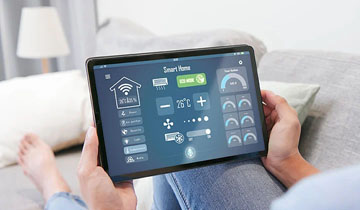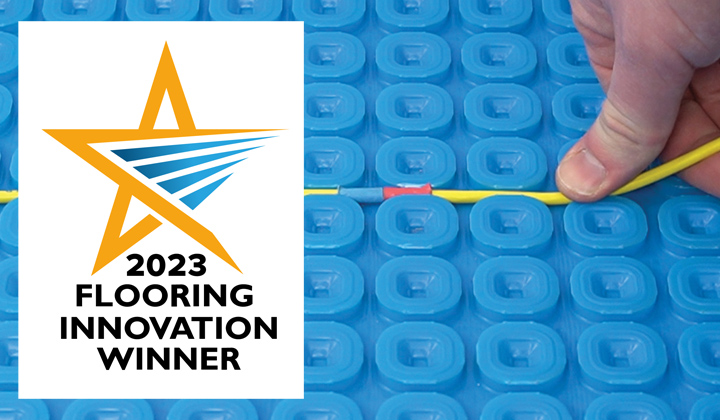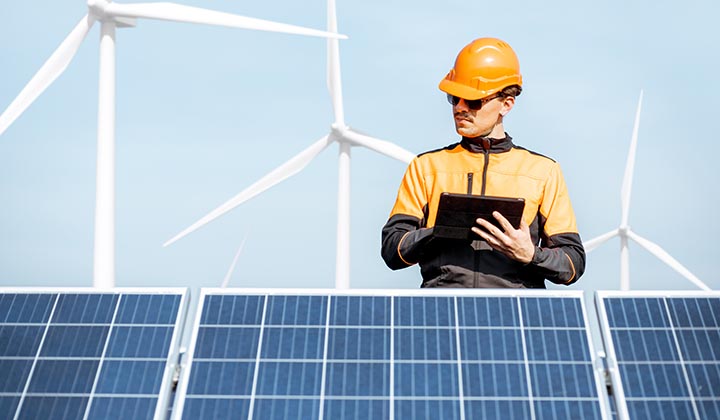4 min read
Direct electric heating key for decarbonisation of heating in the UK
Launched in the latter part of 2022, the report ‘Working towards Net Zero’ sheds light on the UK construction industry’s attitudes toward direct...

We recently published a report looking at attitudes towards decarbonisation within the construction industry. The findings are revealing…
There’s consumer demand for low-carbon heating alternatives. The construction industry is poised to deliver them. And many consider direct electric to be the best solution for our varied UK housing stock. However, perceived costliness and a bad reputation are standing in the way to large scale adoption.
But that shouldn’t put anyone off.
There are many benefits to electric heating – trust us, we know. If advantages like efficiency, cost, and control can be kept at the forefront of consumers’ minds, then direct electric heating solutions will likely be the low-carbon heating solution that helps in transitioning to a Net Zero future.
Consumers want low-carbon, electric can be it.
Let’s dive a little deeper into the report, the readiness, and the results that direct electric can deliver.
Our Working Towards Net Zero report, reveals that against the backdrop of rising prices and energy uncertainty, consumer interest in low-carbon heating methods has piqued.
67% of industry professionals say because of rising energy costs many consumers are showing an interest in low-carbon heating methods.
And two-thirds of construction professionals believe they have the resources and solutions to meet the increase in demand. Construction teams across the UK are recommending electric underfloor heating and glass panel radiators to environmentally conscious homeowners because they know the adoption of more low-carbon heating methods is necessary for meeting the UK’s Net Zero target.
Like buying a sofa or a car, UK homes come first- or second-hand, new builds and existing housing stock.
Retrofitting the existing UK housing stock is one of the biggest hurdles on the UK’s route to Net Zero. The most recent Climate Change Committee (CCC) report to parliament stated that 29 million existing homes need to be upgraded and retrofitted with a low carbon heating system by 2050, and half of that needs to happen by 2035. The construction industry agrees.
62% of the industry sees retrofitting consumers’ homes as the biggest challenge.
Direct electric is seen to be the right solution for smaller homes, those which require fast installation, and those which do not have outside space available. 54% of construction workers see direct electric as the best low-carbon option for smaller homes and apartments.
Although consumer interest has piqued, construction professionals believe many people still have a negative perception of electric heating. In fact, 71% of construction workers agree that old-fashioned storage heating and immersion heaters influence the way modern solutions are perceived, and 79% say higher running costs put consumers off installing direct electric heating.
This tells us people are unsure of what’s what. On one hand, consumers are interested in low-carbon heating due to price increases. On the other hand, they’ve got a negative impression of direct electric heating solutions and are worried about the potential costs of electric heating.
It’s time for change.
To enable construction professionals to meet the demand for low-carbon heating, everyday homeowners need to be reminded of how they can benefit from direct electric heating. We need to demonstrate how it can save them money, and why it might be suitable for their home.
We’ve highlighted a few of the options you can talk about with your customers:
Renewable tariff pairing
One of the greatest benefits of direct electric heating is that it’s immediately pairable with a low-carbon renewable energy tariff. This makes it one of the most immediately accessible forms of low-carbon heating currently available for consumers. If people want to reduce their emissions soon, converting to electric and moving to a renewable tariff is a sure-fire way to do it. And, as renewables make up an increasing portion of the generation mix of electricity, even non-renewable tariffs will become greener.
Zone and time control
Central heating systems give households less location control when compared to electric panel radiators or underfloor heating. They also typically take longer to heat up, meaning timing control is worse too.
As more households in the UK switch energy tariffs that take advantage of variable prices, the ability to adjust your usage and temperature quickly and precisely may be a big saver.
Size
Electric heating solutions are very compact. An electric panel radiator is much smaller than a gas or hydrogen boiler. As we mentioned above, this is ideal for the large portion of the UK’s housing stock.
Off-grid living
Low-carbon electric heating solutions may be better for the 4 million UK homes that aren’t connected to the UK gas grid. Hydrogen boilers won’t be available to these homes, heat pumps have large upfront costs and ground source pumps require significant construction work. Electric heating solutions can be a quick low-carbon replacement of the existing systems.
You can read the full construction industry insights here, and find out more about our products here.

4 min read
Launched in the latter part of 2022, the report ‘Working towards Net Zero’ sheds light on the UK construction industry’s attitudes toward direct...

2 min read
We’re delighted to announce that we’ve won at the Flooring Innovation Awards 2023 with our innovative, industry-first heating cable, ThermoSphere...

5 min read
The UK must reach its net zero goal for 2050, and in the construction sector that requires a 68% reduction of carbon emissions by 2030.Last year we...